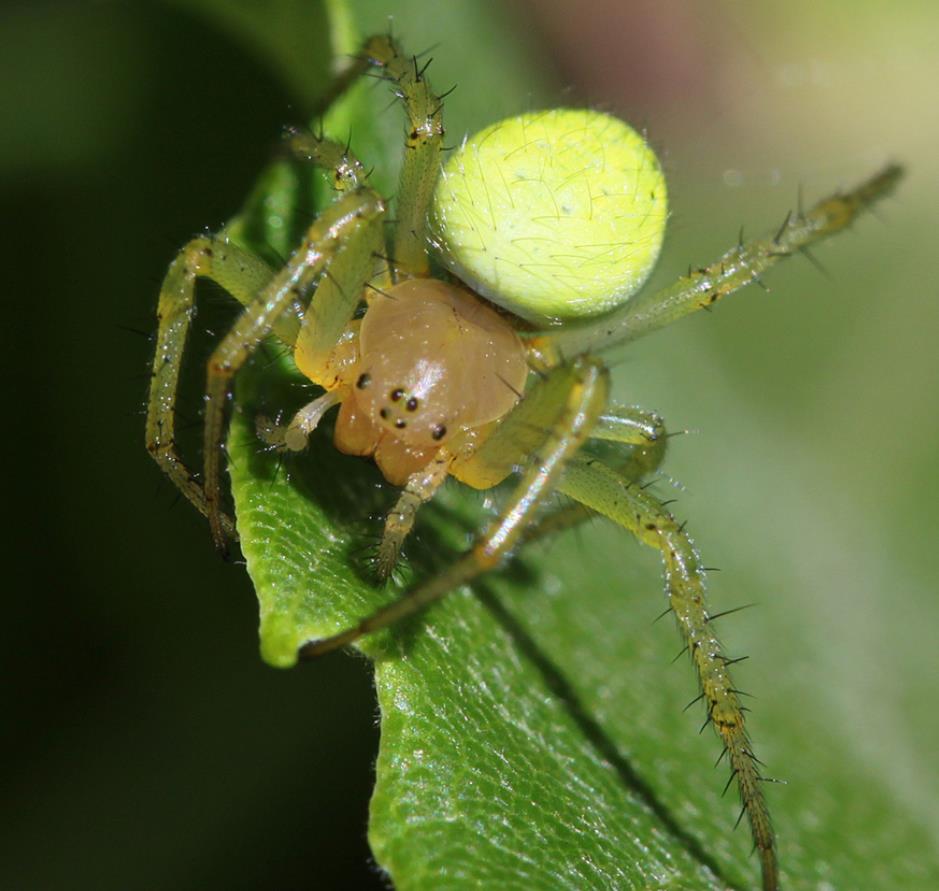
There are several species of cucumber spider, recognised by their bright green abdomen.
Male length: 3.5-4mm
Female legnth: 4-6mm
Cucumber spiders are a common sight across the UK, found along the edges of woodlands, in hedgerows and many other habitats with trees or bushes. They spin small webs amongst the foliage to catch flying insects. Rather than hiding away, cucumber spiders often sit out in the open, relying on their green body to camouflage them as they wait to pounce on any prey caught in their web.
There are five British species of cucumber spider, four of which need to be viewed under a microscope to identify to species. Only two of these are common – Araniella cucurbitina and the virtually identical Araniella opisthographa.
How to identify
Both common species of cucumber spider have a glossy, yellowish-brown carapace and a bright, apple-green abdomen with paler sides. When seen from below, there is an obvious red spot just above the spinnerets.
This green spider (Araniella cucurbitina) is seen from April to October and is around 4mm-6mm long. It is usually found hanging out on low growing bushes and hedgerows and eats flies and other small insects. They are native to the UK and, while they look mostly green all over, there is a small red spot above their web spinners on their tail.

Cucumber Green Spider
A very conspicuous spider with a dark thorax and almost luminous, yellow-green abdomen, this species spins an orb web in tall vegetation, trees and bushes.

It is very common in gardens but sometimes overlooked as its striking colours are good camouflage amongst green leaves. Like all the other British spiders, this is exclusively a carnivore. It is harmless to humans.
This spider does not use a hideout, because it is camouflaged by its green colour. Adult spiders first show this colour in spring. Freshly hatched spiderlings are red, and change to brown before the autumn. On the end of the abdomen there is a red mark in adults.
